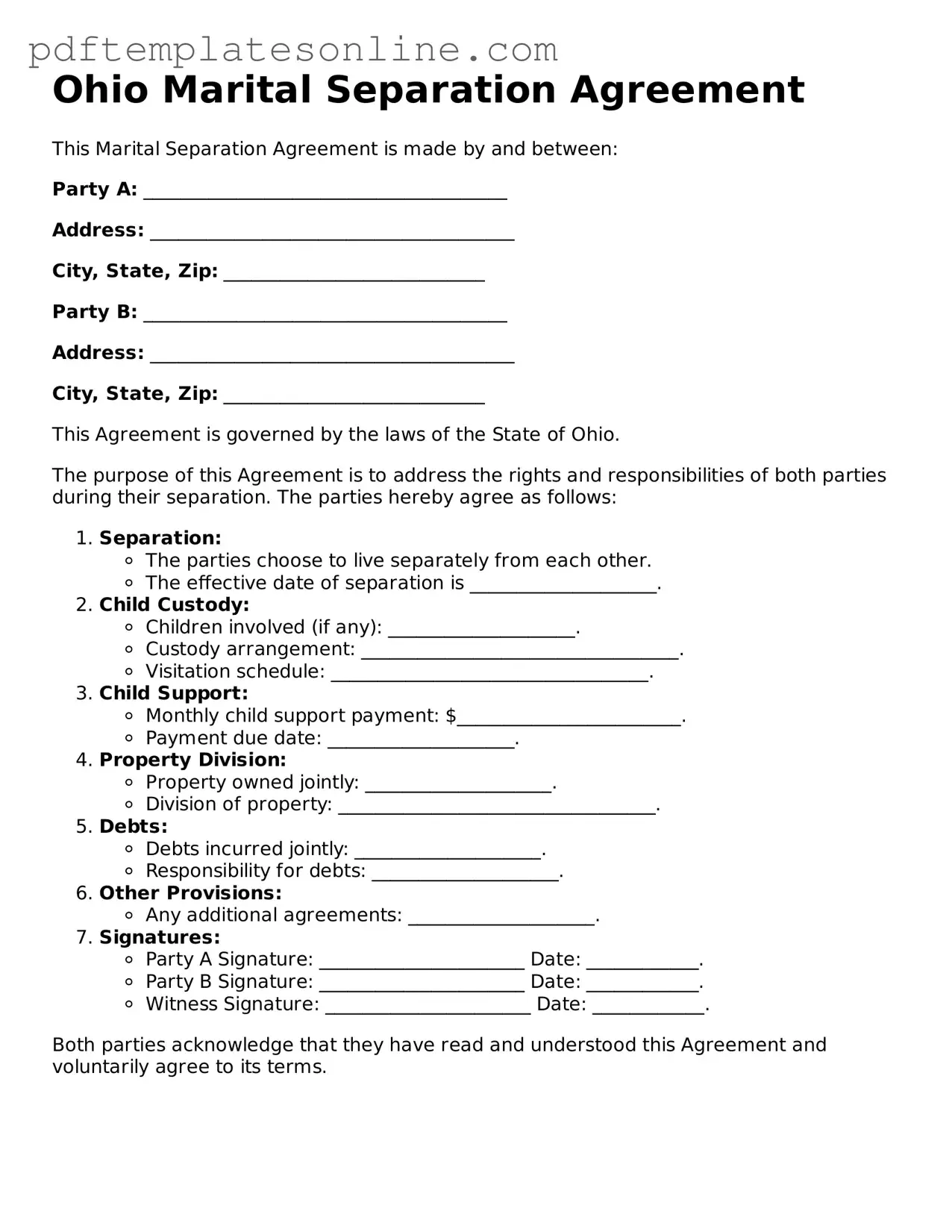Filling out the Ohio Marital Separation Agreement form can be a daunting task. Many individuals make common mistakes that can lead to confusion or complications later on. One significant error is failing to provide accurate personal information. It's essential to ensure that names, addresses, and other identifying details are correct. Inaccuracies can cause delays in processing the agreement and may even lead to legal complications.
Another frequent mistake is overlooking the inclusion of all relevant assets and debts. Individuals often focus on major assets like homes or vehicles while neglecting smaller items or joint debts. Every asset and liability should be listed to avoid disputes in the future. This comprehensive approach helps both parties understand their financial situation and facilitates a smoother separation process.
People also tend to underestimate the importance of being specific about child custody arrangements. Vague language can lead to misunderstandings and disputes down the line. Clear definitions of custody, visitation schedules, and decision-making responsibilities are crucial. This clarity helps in maintaining a stable environment for the children involved.
Additionally, some individuals forget to address spousal support or alimony. Even if both parties believe that support is unnecessary, it’s wise to include a clause in the agreement. This inclusion protects both parties and can prevent future claims or disputes regarding financial support.
Another mistake is not considering the tax implications of the agreements made. Certain decisions regarding asset division or support payments can have significant tax consequences. Consulting with a financial expert or tax advisor can provide valuable insights, ensuring that both parties are aware of how their decisions may affect their financial future.
Lastly, individuals often neglect to seek legal advice before finalizing the agreement. While it may seem tempting to handle everything independently, having a legal expert review the document can help identify potential issues. Legal professionals can provide guidance tailored to individual circumstances, ensuring that the agreement is fair and enforceable.
